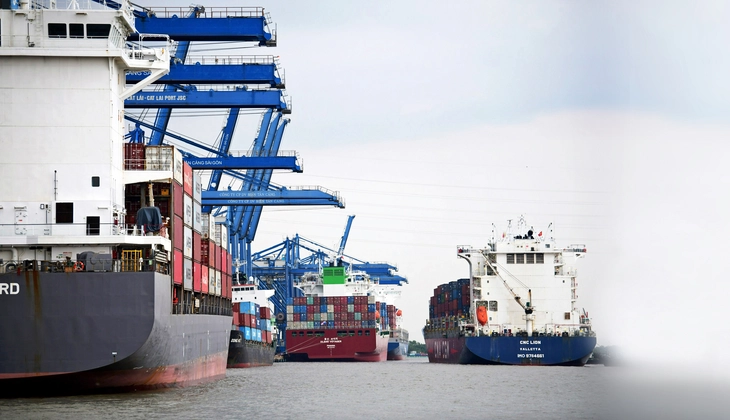
Import and export of goods at Cat Lai port (Thu Duc city, Ho Chi Minh City) on the afternoon of April 10 - Photo: QUANG DINH
Tuoi Tre discussed with Associate Professor Dr. Tran Hoang Ngan about the issue of recharging the economy. He said:
- Vietnam's economic growth relies on three main pillars: exports, investment and domestic consumption. Now exports are facing difficulties, although the US has postponed tariffs for 90 days, things are still unclear while China's retaliation has further complicated the trade war.
Therefore, in addition to flexibly negotiating to have reasonable tax rates, exploiting other markets outside the US to bring the export pillar back to normal, and right now, we must continue to restructure the economy, first of all expanding the two remaining growth pillars: social investment and domestic consumption.
At the same time, promote the country's potential advantages in agriculture and tourism and find new growth drivers from science, technology, innovation, green economy, digital economy, circular economy, service economy... to flexibly respond to risks in an uncertain world, thereby maintaining the immediate growth momentum of 8% and later double digits.

Assoc.Prof.Dr. Tran Hoang Ngan
Cherish and respect the market of 100 million people
* Simply put, we need to recharge the remaining two growth pillars, but where to start and how strong must the solution be, sir?
- In the current situation, it is necessary to both recharge for the immediate period when tariffs are unclear and then have a long-term plan to exploit the advantages we have, promote the potential of localities after rearranging administrative boundaries, create new "locomotives" and new development spaces with many aspirations to reach far.
In the immediate future, we must revive the purchasing power of the domestic market. We have a market of more than 100 million people, strong in consumption, very united, always sharing in difficulties. Domestic consumption contributes 60% of GDP.
If we want economic growth of 8% in 2025, domestic consumption must increase by 10-12%, while in recent years it has only increased by about 7-8%. The defensive mentality and tight spending that has reappeared and has been "reinforced" as it was during the COVID-19 pandemic has not been removed, but has now become even more "firm" due to the impact of the global trade war.
Therefore, we need to quickly come up with strong solutions to share with consumers, especially those at risk of losing income due to the trade war. These solutions must also be long-term and comprehensive so that once they are "broken", they must "break" the ice, and there cannot be any temporary solutions.
* But if we want people to open their wallets, we have to increase income, which means more money. Where does this come from?
- The government must have a policy to share with the people. It is necessary to immediately reduce personal income tax instead of following the roadmap until 2026. With this type of tax, the urgency to fix it is too clear and unanimous; if the tax reduction is approved, it will certainly have a big impact on consumer psychology.
People understand that the State is accompanying and sharing. Therefore, the timing of tax reduction is very important, it must be timely and appropriate. If we miss the falling point and the defensive mentality spreads further, it will be very difficult to change.
What is the strong, breakthrough solution? That is, in addition to increasing family deductions and narrowing tax rates... with personal income tax, we must also calculate a reduction in value added tax, in the direction of further reducing tax rates, expanding to other goods and services in a longer-term roadmap instead of every six months like previous tax reductions.
The situation is different now, more difficult, more urgent, requiring strong measures and decisions. Every day of delay will only add more additives to the concrete, tightening the purse strings. Let's cherish and respect the market of 100 million people.
This market has helped the economy through the most difficult times, most recently the COVID-19 pandemic. It is also worth mentioning that it takes many years for an economic downturn to occur, like the global economic recession in 2008, which took 5 years to recover.
There are scenarios for every tax level
* But is that enough, are there any worst-case scenarios for tariffs ?
- Tariffs are still complicated, so we need to prepare many scenarios - high taxes, moderate taxes and previous taxes - to have appropriate response solutions. In order to avoid being passive, affecting the purchasing power and lives of workers in the export sector, we first need to review and make a list of businesses and workers that may be affected by tariffs to have policies to reduce taxes, fees, land rents, then have a mechanism for banks to extend, postpone, extend debts, reduce interest rates for businesses...
On the workers' side, there also needs to be an immediate policy scenario like during the COVID-19 pandemic when businesses had to close due to lockdowns. These are temporary, immediate solutions to minimize damage to businesses and workers' lives.
Solutions to find new markets, adapt to new tariffs... are also extremely important, but it takes time to take advantage of and promote the benefits from 17 free trade agreements.
* Once we have a response plan, should we hope that the situation will become brighter and more optimistic?
- We will still face many difficulties and complications to solve, but we must also realize that the US imposes tariffs not only on a few partners but on all of their trading partners. It is difficult for us, other countries are also difficult, some countries are even more difficult than us.
You turn around, we also have to find a way out. But the American people cannot stop consuming and have been used to Vietnamese goods for the past 30 years and also do not accept the high prices due to tariffs. There must be a way out. But no matter what, we must have scenarios to be able to survive, minimizing the impact if any on the people, on economic growth.
In my opinion, the Government needs to develop scenarios to respond to tariffs and global trade wars to submit to the National Assembly in the 9th session in May. The impact of tariffs and the possibility of a global economic downturn are huge, so timely response institutions and policies are needed. This has been demonstrated during the COVID-19 pandemic.
Increase public investment, stimulate private investment
Regarding the public investment pillar, public debt is currently at 37% of GDP while the public debt ceiling is 60% of GDP. Thus, the Government can borrow more money to invest in synchronous infrastructure projects: transportation, energy, digital infrastructure, social infrastructure such as schools, hospitals, culture, etc.
These investments will stimulate and anticipate investment from the private sector to create an investment wave after we complete streamlining the apparatus and rearranging administrative boundaries with a new, wider and brighter development space.
Turn on the machine and run it at full speed, don't breathe a sigh of relief!
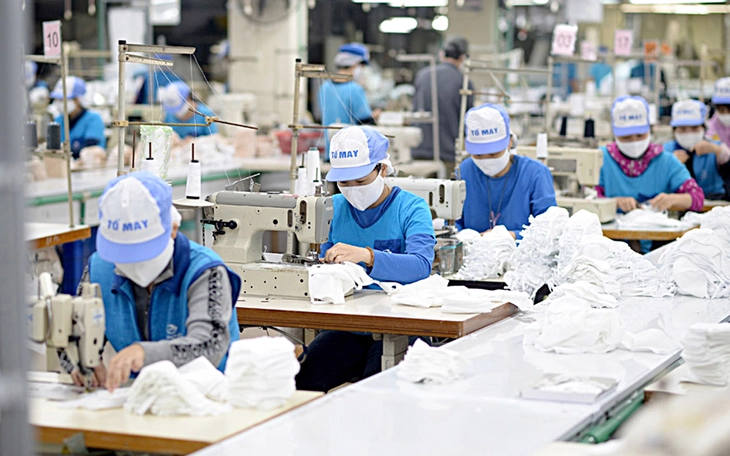
The 90-day postponement of the imposition of reciprocal taxes helps businesses prepare resources to respond to risks - Photo: K.GIANG
The reaction from the textile industry shows that the 90-day tax suspension is a time for everyone to "run" at full speed, not a time to relax.
The reaction from the textile industry shows that the 90-day tax suspension is a time for everyone to "run" at full speed, not a time to relax.
"Running on fumes" to export goods
Mr. Pham Quang Anh, CEO of Dony Garment Company, said that his company's orders, originally scheduled for delivery in July, must now be completed by the end of May.
"The average shipping time to the US is more than a month, but we still proactively calculate an extra month and a half to prevent risks. The goods must arrive at the US port before July 9 (the end of the 90-day tax extension period). Orders to the US are now running out of steam," said Mr. Quang Anh.
To meet urgent progress requirements, businesses are focusing all their efforts on urging raw material suppliers, reallocating personnel, and requesting to delay less urgent orders to the Middle East, Europe, etc.
According to Mr. Quang Anh, in the current context, the ability to adapt quickly is a vital factor. "Businesses are forced to build a maximum flexible operating model, ready to adapt to any scenario," he emphasized.
In addition, Mr. Quang Anh said that one of the big lessons from this policy change is the importance of proactively sourcing raw materials. "Previously, we only focused on output, but now input is also extremely important.
Developing domestic raw materials is Dony's strategic move in the coming period to increase initiative and shorten the supply chain, making it easier to handle unexpected situations," he shared.
The necessary silence to prepare for the adverse scenario
Mr. Pham Van Viet - Chairman of Viet Thang Jeans Company, Vice Chairman of Ho Chi Minh City Textile and Garment - Embroidery Association - also said that proactively sourcing raw materials, especially prioritizing domestic raw materials, is urgent and this is also the upcoming strategy of Viet Thang Jeans.
However, he also warned that this is not a "long-term opportunity", but rather a "necessary pause to prepare for an adverse scenario".
In the short term, market sentiment has somewhat stabilized but pressure remains high, as international buyers are quietly reassessing supply chains and legal risks to reallocate orders in the medium and long term.
"Behind the decision to postpone is a more thorough review and investigation process from the US. If there is no positive change in policy dialogue or transparency cannot be demonstrated, the tax can be completely applied after 90 days," Mr. Viet emphasized.
From the association's perspective, Mr. Viet recommends that businesses focus on three pillars of response to minimize risks and improve adaptability to fluctuations in the next 90 days:
1. Supply chain transparency: Proactively establish a traceability system for each batch of raw materials. Therefore, it is necessary to prioritize investment in digitizing supply chain data, independent inspection and transparent disclosure to partners.
2. Proactively communicate with customers: Proactively update international compliance certificates, provide clear information about the supply chain and demonstrate a commitment to responsibility.
3. Diversify markets and upgrade products: In addition to the US, it is necessary to expand to the European Union, Japan, Korea and the domestic market. At the same time, it is necessary to invest in design, brand development and gradually shift to the ODM/OEM model to upgrade the value chain and adapt to the volatile global trade environment.
With a long-term vision, Mr. Viet proposed a "supply chain sovereignty" strategy, focusing on developing a "regional raw material belt" through public-private partnerships to invest in cotton, fiber, and yarn raw material areas in the South Central provinces, the Mekong Delta, or in association with ASEAN countries such as Laos, Cambodia, and Indonesia. In addition, the industry needs to attract strategic FDI capital flows into clean weaving - dyeing - finishing segments that meet ESG standards. This is a prerequisite to meet increasingly stringent international standards, especially in high-end markets.
Source: https://tuoitre.vn/gap-rut-nap-nang-luong-cho-nen-kinh-te-20250411083740428.htm


![[Photo] Prime Minister Pham Minh Chinh receives Ambassador of the French Republic to Vietnam Olivier Brochet](https://vphoto.vietnam.vn/thumb/1200x675/vietnam/resource/IMAGE/2025/5/13/f5441496fa4a456abf47c8c747d2fe92)

![[Photo] Prime Minister Pham Minh Chinh meets with US business representatives](https://vphoto.vietnam.vn/thumb/1200x675/vietnam/resource/IMAGE/2025/5/13/5bf2bff8977041adab2baf9944e547b5)

![[Photo] President Luong Cuong attends the inauguration of the international container port in Hai Phong](https://vphoto.vietnam.vn/thumb/1200x675/vietnam/resource/IMAGE/2025/5/13/9544c01a03e241fdadb6f9708e1c0b65)


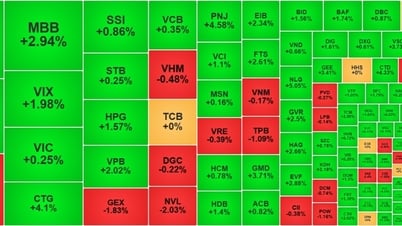
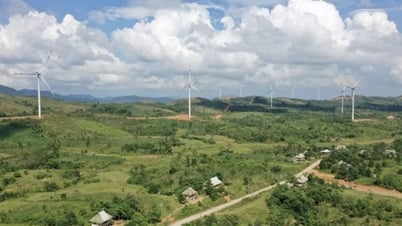


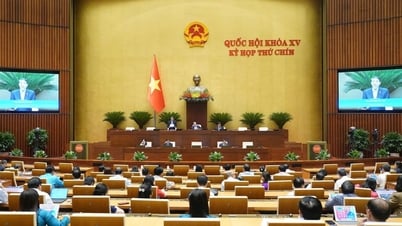





























































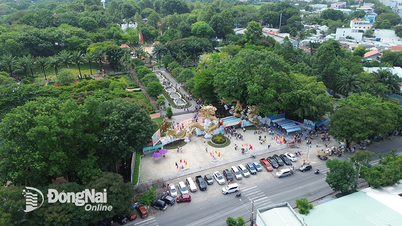
















Comment (0)